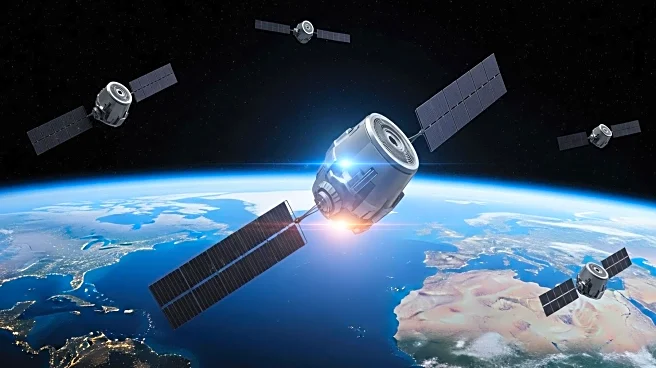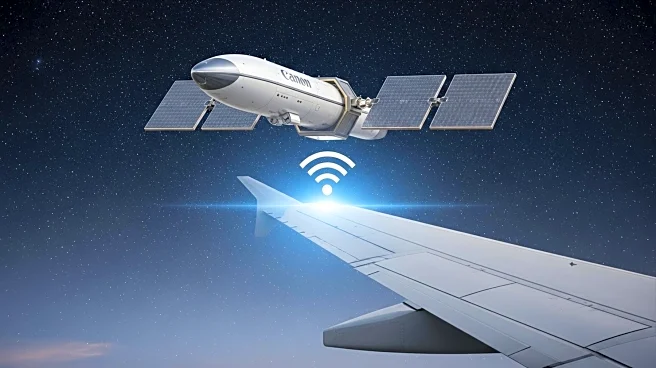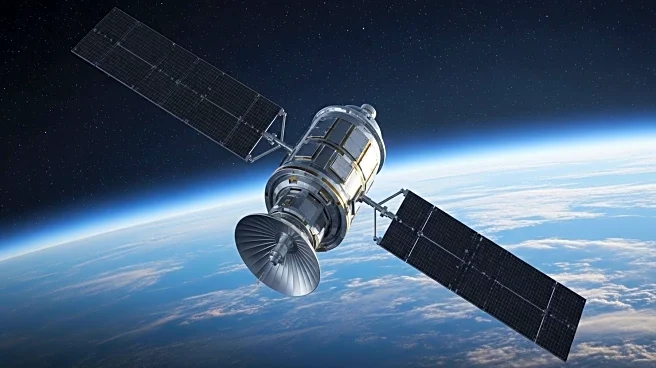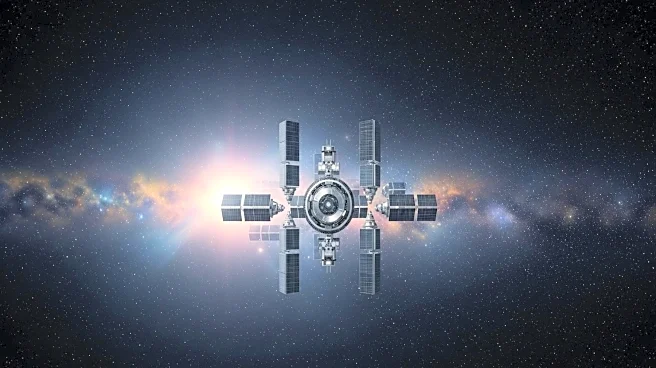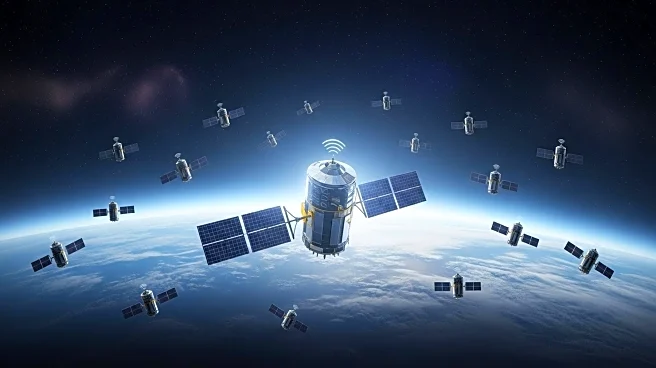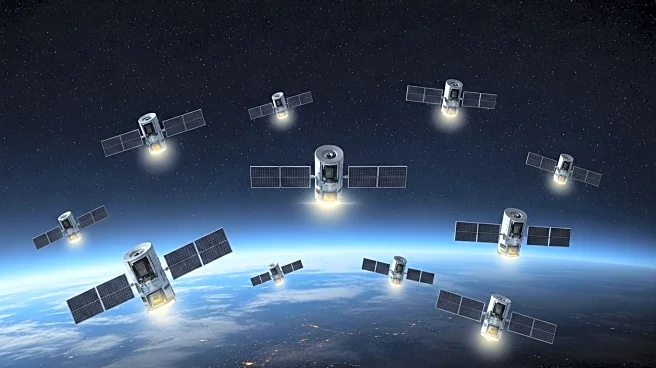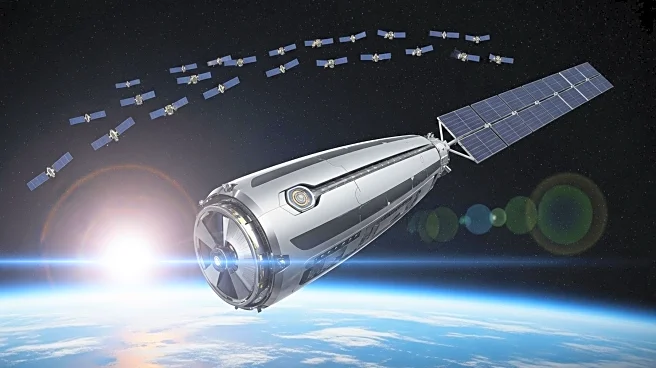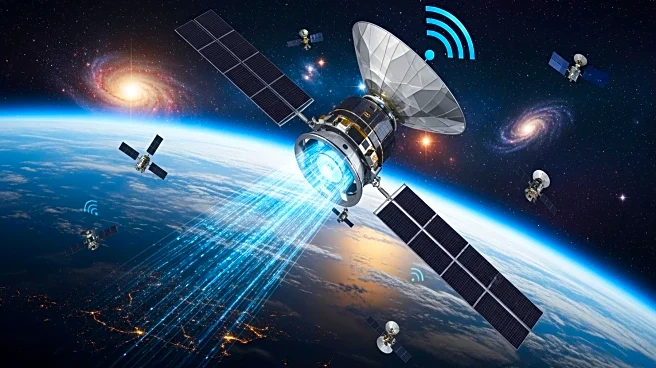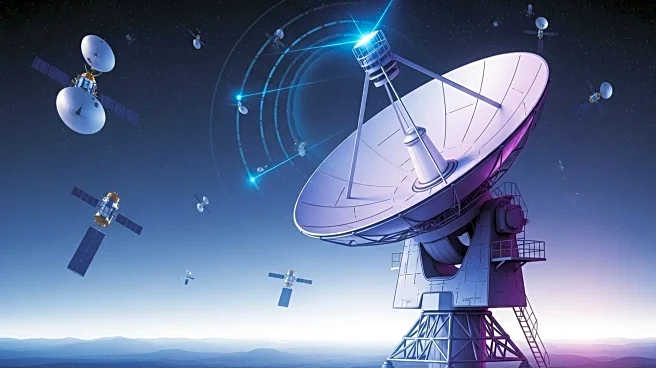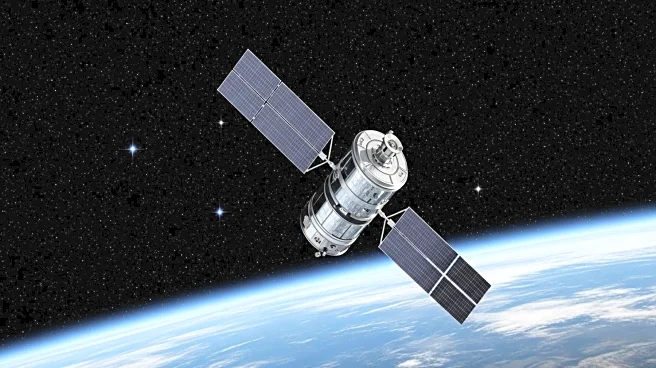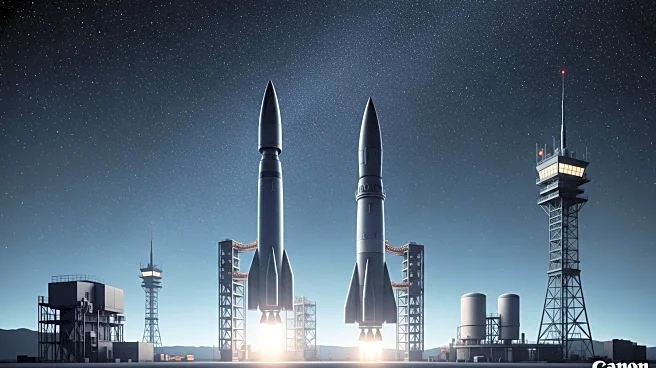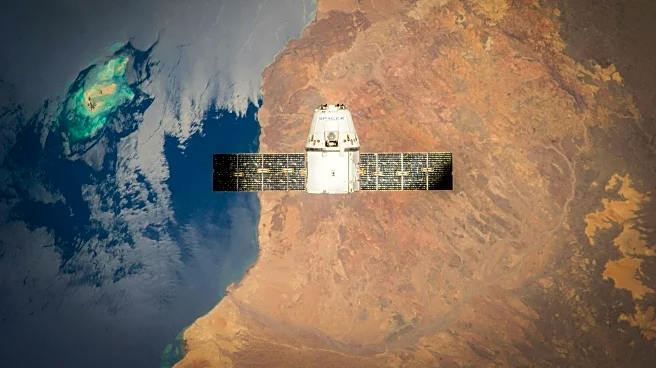What is the story about?
What's Happening?
SpaceX has successfully deployed its 2,000th Starlink satellite of the year, marking a significant milestone in its mission to provide global broadband internet coverage. The launch took place from Vandenberg Space Force Base, with the Falcon 9 rocket carrying 24 Starlink satellites into a polar, low Earth orbit. This mission, known as Starlink 17-9, utilized the Falcon 9 first stage booster B1075, which has now completed its 20th flight. The booster successfully landed on the drone ship 'Of Course I Still Love You,' marking SpaceX's 501st booster landing. This achievement underscores SpaceX's continued expansion of its satellite internet constellation, which aims to offer high-speed internet access to underserved and remote areas worldwide.
Why It's Important?
The deployment of 2,000 Starlink satellites in a single year highlights SpaceX's aggressive expansion strategy and its commitment to revolutionizing global internet access. This development is particularly significant for remote and rural areas that lack reliable internet infrastructure. By increasing the number of satellites in orbit, SpaceX enhances its network's capacity and coverage, potentially reducing latency and improving service quality. The success of the Starlink program could disrupt traditional internet service providers and drive competition in the telecommunications industry. Additionally, the frequent reuse of Falcon 9 boosters demonstrates SpaceX's advancements in cost-effective space travel, which could lower the barriers to entry for future space missions.
What's Next?
SpaceX plans to continue its rapid deployment of Starlink satellites, with more launches scheduled throughout the year. The company aims to expand its service offerings and improve network performance as it increases the constellation's size. Regulatory approvals and partnerships with governments and organizations worldwide will be crucial for expanding Starlink's reach. As the network grows, SpaceX will need to address challenges related to satellite congestion and space debris management. The company is also exploring opportunities to integrate Starlink with other technologies, such as 5G networks, to enhance connectivity solutions.
AI Generated Content
Do you find this article useful?
